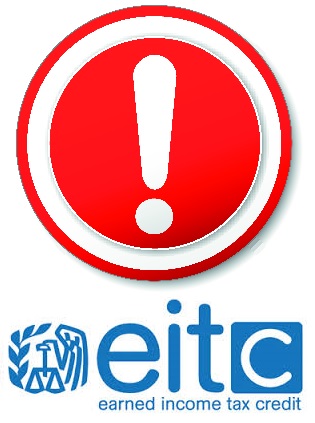Did you know about 27 percent of Earned Income Tax Credit returns are paid in error? According to the IRS, the five most common errors account for more than 60 percent of erroneous claims. Remember, EITC preparers have due diligence requirements or questions you must ask your client, to determine eligibility for the credit. Errors can delay your refund or could end up denying your EITC claim. Watch out for these common errors when claiming EITC.

Below, we list the five most common errors according to the IRS and some tips for handling them.
Claiming a child who does not meet all the qualifying child tests: relationship, residency age and joint return
We find most of the errors are because the child is not related to one of the listed relationships or the child didn’t live with the person or persons on the tax return (residency test). Read more about qualifying child rules here.
More than one person claiming the same child
This is often caused because the child lived with more than one person for more than half the tax year. But, sometimes, a person claims a child who didn’t live with them for more than half the tax year. Find more information on our “Qualifying Child of More Than One Person” page.
Social Security number or last name mismatches
Look at the Social Security card of everyone listed on your return to make sure the number matches and that you use the name the same way the Social Security Administration lists the name. Read more about Social Security Numbers and EITC here.
Filing as single or head of household when married
Unsure about your tax filing status? Use the EITC Assistant to find out! Or, use the Spanish version of the EITC Assistant.
Over- or under-reporting of income or expenses
Be sure you wait until you have all your Forms W-2, W-2G, 1099 MISC, and all other income records, even if not reported on a form, before you file your return. And, you need to report all the income you earn from running or owning a business or farm and deduct all allowable expenses.
Consequences of Errors on Your EITC Returns
Avoid an audit, additional tax, penalties or interest by making sure all the information on your tax return is complete and correct. There are consequences for filing your returns with errors whether you made a mistake or knowingly did it. Find out more about the consequences of errors on your EITC returns here.
If you pay someone to prepare your return, that person and the firm the person works for has the responsibility to make sure your return is correct. Expect your preparer, whether you pay or it’s free, to ask you a lot of questions to make sure your return is correct. For more information on choosing a preparer, see our page “IRS Advice on How to Choose a Tax Preparer.” For more information on the preparer’s responsibilities, see our article, “Consequences of Not Meeting Your Due Diligence Requirements.”
Can You Support Your Claim of a Child?
If the IRS would pick your EITC claim for an audit based on the child you claim, they will ask for proof that the child is your qualifying child. Or, if you and another person claim the same child, they may ask you to send proof. The following are some of the documents you can use to support your claim:
Relationship Test: You need to send proof the child is related to you:
- Birth certificates or other official documents of birth that show you are related to the child, you may have to send copies of more than one certificate. For example, if you are the grandparent, you would send a copy of your child’s birth certificate showing your name and a copy of your grandchild’s birth certificate showing your child’s name.
- If the father of the child is not named on any of the birth certificates you have, you may have to send paternity test results.
- If you are related by marriage, you may have to send a copy of the marriage certificate showing how you are related to the child
- If the child is adopted, you may have to send the legal adoption papers such as a court order or a letter from the authorized child placement center showing the child was placed with you before the adoption is final
- Proof for full-time student:
- Copies of official school records showing:
- Child’s address of record (that must match your address)
- The child was a full-time student for at least five months of the tax year (the months don’t have to be consecutive) and you may need more than one school record
- The dates the child attended the school
Proof of Residency (you may have to send more than one of the following to show your child lived with you for more than half the year):
- Copies of school (no report cards) medical or social services records
- Letter on official letterhead from school, a healthcare or medical provider, social service agency, placement agency official, employer, Indian tribal official, landlord or property manager or a place of worship that shows:
- The name of your child’s parent or guardian
- Your child’s address matching your own
- Dates the writer knows the child lived with you
- Daycare records or a letter from your daycare provider (if the daycare provider is related to you, you must have at least one other record or letter that shows proof)

